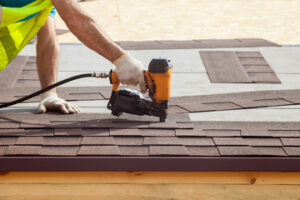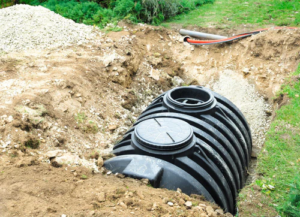Your roof endures an incredible amount of abuse from the elements. Over time, shingles can crack, curl or even disappear. Protective granules can be worn away, and flashing—the guardian against water intrusion around joints and valleys—can become loose or corroded.

Fortunately, surface repairs are relatively inexpensive and fairly easy to do, especially if they’re caught early. For professional help, contact Columbus Roof Repair.
Your roof’s shingles and tiles are more than just aesthetic elements; they protect your home from the rain, wind, sun and other environmental conditions. If your shingles or tiles become damaged, they can allow these elements to enter your home and cause damage to your roof decking, sheathing, insulation, and other structures in your house. The best way to prevent shingle and tile damage is through regular maintenance and inspections.
Missing shingles, or areas with obvious gaps, need to be repaired as soon as possible. These holes in your roof’s defenses can lead to many other problems, including leaks, mold and mildew growth, and even wood rot.
Depending on the type of shingle you have, these gaps may also be caused by ice dams or other issues with your roof drainage system. Getting these gaps fixed as soon as they occur can save you the hassle and expense of having to replace your roof later on.
Other types of shingle and tile damage include cracking, bubbling or peeling. This may be a sign that the shingle is nearing the end of its lifespan or that it’s not well installed.
If you notice these signs, or if you see water spots on your ceilings, walls or attic floor, it’s time to have a professional inspect your roof. This will determine the extent of the repairs and whether or not an insurance claim is necessary to cover your deductible.
Replacing a single shingle is relatively simple, though you’ll likely need to have a roofer help you with it. Typically, a new shingle is inserted between the existing upper and lower undamaged shingles. A roofer will then nail it in place through its nail strip. If you’re comfortable working on your roof and know what you’re doing, you can try replacing a single shingle yourself. Just make sure that you use a caulk or putty to seal the edges of the shingle after you nail it in place. It will help to ensure that the shingle stays in place and doesn’t become a source of moisture or air leaks.
Fascia Damage
The fascia, or trim board, is an essential part of the roof overhang and eave, as well as your home’s structure. It covers the ends of the rafters, provides a smooth finish to the roofline, and helps keep water from entering your home. Fascia also provides a point of attachment for gutters and contributes to the overall protection of your home by directing rainwater away from its foundation.
A damaged or rotting fascia is not only unsightly, but it can lead to serious problems for your home’s foundation and internal structures. Look for any evidence of wood rot, discoloration, or soft spots in the fascia. Peeling paint is another sign of moisture damage that should not be ignored.
If you notice these signs, a professional can assess the extent of the problem and repair or replace your fascia boards as needed. A full fascia replacement will include removing the existing boards, removing the gutters, and then installing new fascia. It is important to remove any debris, caulking, or paint that may be preventing the new fascia from properly attaching to the rafters.
In addition to causing structural issues, damaged fascia can lead to the infestation of pests and rodents. Birds and squirrels are attracted to weakened or decaying eaves and can easily chew their way through fascia boards and into the eave, which can affect the internal structure of the shingle roof and walls. Rodents may also enter the house through these areas, which can cause significant damage and pose health risks for your family.
Aside from being a major eyesore, damaged soffits and fascia can also increase your energy costs. Cold air can leak through the gaps caused by rotting fascia and into the attic, reducing the effectiveness of your home’s insulation. You will then have to rely more on your HVAC system for heating, which can lead to higher energy bills than you would otherwise pay. Performing regular inspections of your fascia and soffit and making timely repairs will help prevent these issues from occurring.
Flashing Damage
One of the most important components of any roof is the flashing. This unsung hero silently guides water away from vulnerable areas, preventing it from penetrating your home and causing costly damage to the structure and contents. However, this is only if the flashing is in good condition. Damaged flashing can lead to a host of problems, including water leaks that threaten the health and safety of your home and family.
Flashing is made from thin strips of metal, typically galvanized steel. It is installed along the roof’s seams and edges, as well as in other areas where the roof meets other structures such as chimneys, dormers, or skylights. It is designed to be tough and durable, but it’s susceptible to wear and tear as it faces the elements. Exposure to wind, ice, rain, and even salt air from coastal neighborhoods can degrade flashing.
The most common signs of flashing damage are rust or corrosion spots, cracks in the metal, and holes. These are usually the result of natural wear and tear, but if left untreated, these can lead to water infiltration. In addition, if the flashing is not installed properly with proper nails, laps, and sealant, it may fail to provide the protection it was intended to offer your home.
It is also possible for flashing to become loose or even detached from the roof due to structural issues such as a settling foundation or age-related deterioration. If this occurs, it is essential to address the issue right away to prevent further problems.
Some flashing repairs are relatively easy for a skilled roofing contractor to perform. If the area of concern is small and isolated, the repair is often as simple as applying a layer of roofing cement to the damaged surface. However, if the flashing is in poor shape and requires replacement, it is best to bring in a professional roofing contractor to perform the work. In many cases, replacing the flashing involves removing and re-installing the shingles in the surrounding area. This is an involved process that must be handled with care to avoid causing further damage to the roof.
Skylights
Skylights are like windows on the roof, providing natural lighting and ventilation. However, they’re more exposed to weather elements than the walls of a house, and so are vulnerable to leaks and water damage. A leaking skylight can damage the ceiling and furniture inside a home. If left unchecked, it can also lead to rotting and mold, which are both health hazards for you and your family. A leaking skylight can be fixed, but it’s essential to take prompt action to prevent further water damage.
A leaky skylight can be a symptom of other problems, such as poor insulation or a damaged roof. But the most common cause of a skylight leak is a cracked seal. Depending on the extent of the crack, it may be necessary to replace the entire skylight. If you’re noticing signs of a leaking skylight, such as watermarks on the ceiling, it’s essential to call in a professional immediately.
A qualified roofing contractor should be able to repair the cracked seal by removing the glass and installing a new one. They will also install a new underfelt collar, and add caulking around the edges of the glass. The underfelt collar is a layer of breathable material that helps the glass to dry and prevents water infiltration.
The best way to avoid a leaky skylight is to install a properly-designed, insulated roof system. You should choose a roofing system that is compatible with the type of shingles used on your roof, and make sure that the flashings are well-installed. If the flashings are nailed down, or the underfelt collar isn’t installed correctly, it could lead to leaks.
You can also improve your chances of avoiding skylight leaks by regularly inspecting your roof for damage. A good inspection includes a close examination of the flashings, and looking for any areas where the sealant has failed or has been worn down by weather conditions. Remember that roof work can be dangerous, and so it’s always wise to use a ladder rather than climbing on the roof itself. Follow recommended safety guidelines for working from a ladder, and wear a harness and non-slip shoes.








